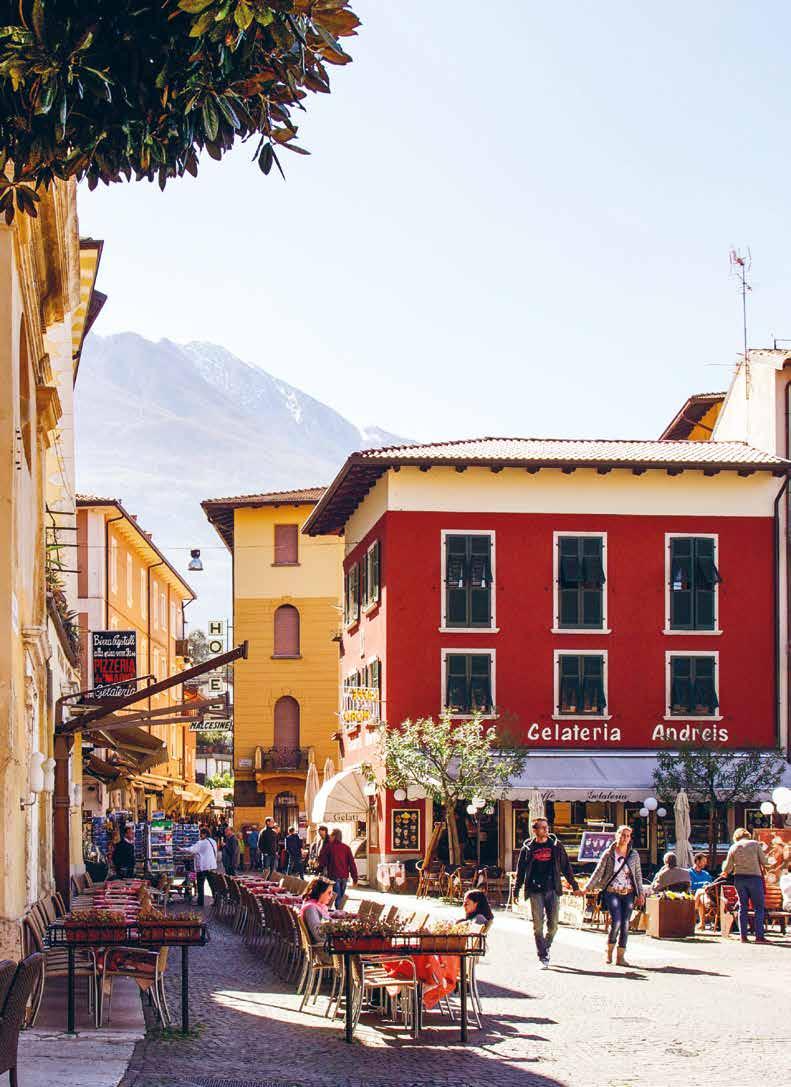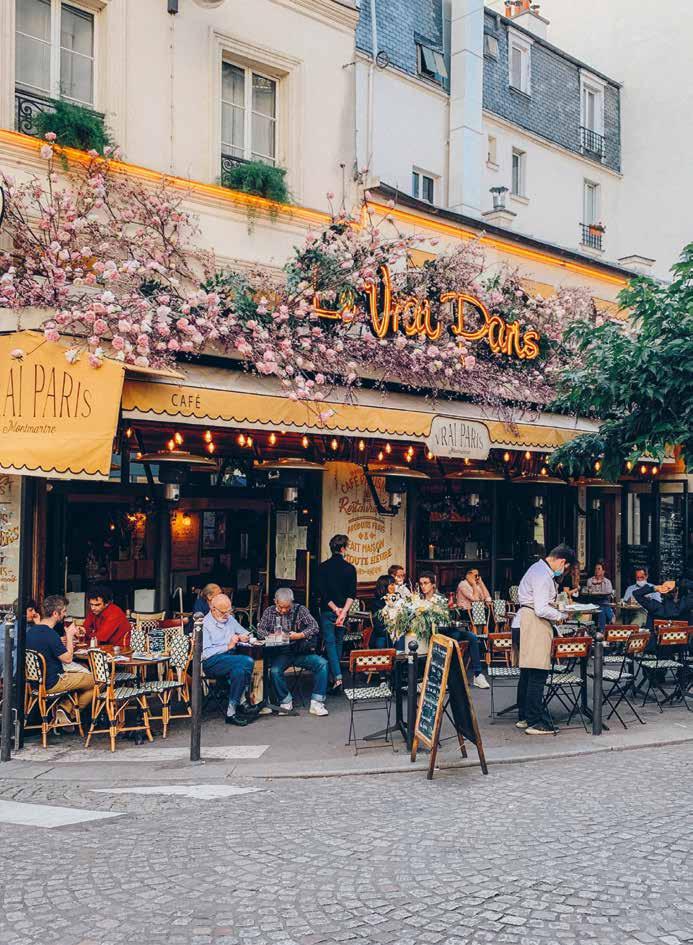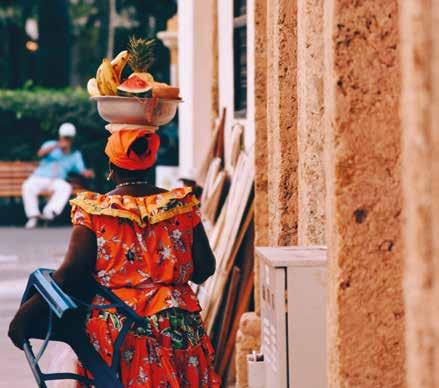
5 minute read
FAIR AND SQUARE
Words –– Kitty Finstad
Fibonacci was onto something. The 12th-century Italian mathematician, whose eponymous ‘spiral’ or ‘golden ratio’ can be uncovered in countless Old Masters artworks and classical architecture knew the power of geometry. The Fibonacci sequence – also known as the rule of thirds – traces a pleasing spiral over a rectangle made up of squares of diminishing size.
Without getting too mathsy about it, the square is solid. A foundation. It’s why, over millennia, it’s emerged as the clear geometric winner in civic planning. Beyond geographic convenience, city and town squares uniquely provide both security and possibility – four connected sides open to the skies. Order against chaos and the freedom for communities to be themselves.
Travellers are drawn to squares. They’re full of history, politics, business, food, art, music, people. You can get lost in them, feel at home in them. In Calgary, Canada, where I grew up, squares weren’t really a thing. They should have been in a typical 20th-century North American city – the grid system of street planning had plenty of space for them. It was a city composed almost entirely of squares. But none of them was left free of development.
Instead, books and films brought me the romance of the squares, the fountains, the grand public spaces that were lacking in my home city. I longed to run across Trafalgar Square, scattering pigeons in my wake. To splash through a coin drenched Trevi Fountain. To sip espresso on Piazza San Marco after stepping off a gondola. To become achingly arty in Washington Square Park or suddenly sophisticated in the shadow of the Louvre.
When I eventually made it to Paris in my late twenties, it wasn’t the grandiose Place Vendôme or the must-visit tourist-magnet Cour du Louvre that made the most lasting impression. It was a tiny neighbourhood square lined with trees, benches, cafés and restaurants. Like all the best discoveries, finding Place du Marché Ste-Catherine was a happy accident. After hours of wandering the Marais district, a little tired, hungry and disorientated (this was long before Google Maps), I found myself pulled towards an increasingly visceral hum of chatter, laughter and clinking cutlery one sultry June evening.
On my own and a little unsure, I did a few recce laps around the perimeter. There were families out for an evening stroll. Couples and friends meeting up for meals. Students hanging out and smoking (it was the 90s). Waiters weaving in between tables delivering drinks and plates. A handsome guitarist strumming away on a bench. This was the place. My place. My square.
No awkward ‘table for one’ status. I savoured and drew out my meal, equally nourished by everything happening around me. The dreamy guitarist moved on and a saxophonist moved in. An elderly couple twirled each other round the cobbles. A cat nuzzled my ankles. Between the mother and daughter at the table next to me, an argument erupted, peaked and resolved in 60 seconds. All of life seemed to be happening here, and I realised that the grand-dame squares of my film-inspired fantasies had some serious petite-soeur contenders. I felt at home. I felt excited. I went back the next day. And the next.
Since that magical, memorable evening, I’ve returned to Place du Marché Ste-Catherine with every visit to Paris. And I’ve made it my personal mission to uncover as many of its little sisters wherever I travel. In France it’s easy –centuries of market culture demands an at-least-weekly
Page 26
Outdoor seating and gelaterias – Italians are masters at making the most out of a square

Page 27
Watch Paris wake up, while sipping on a fresh coffee and eating a croissant
Below left
A couple in a bistro in Paris
Below right
Musical entertainment in Lisbon

Opposite Parisian squares, like this one in Montmartre, are some of the best for people-watching sanctioned place for farmers, traiteurs and vendors of comestibles and household basics to sell their goods and serve local communities.
In the almost impossibly pretty town of Saint-Rémy-deProvence, I knew the weekly market patch would be a must. One sweltering Wednesday in July, dodging the sunhats and shopping baskets of locals and visitors, I immersed myself in olives – thousands of them. Black, green, violet. Made into soaps and oils and olive-wood everything. Butchers, patissiers, acres of spices and herbs – all the herbes de Provence you can shake a sprig of rosemary at. Locals haggling with vendors. Tourists mooning over bunches of lavender. I sampled some fiery, paprika-ish piment d’espelette. Not a strictly local Provençal spice but the locals use it in their cooking. And now so do I. The market has become a tourist highlight in its own right, but this not-quite-square square conurbation of streets around Avenue de la Résistance to me seemed to be the centre of town life.
Indeed, squares of all ilks make my heart go bang for the same reason. But if my relationship with the plazas of Europe have been intimate, sensory, evocative (provocative on occasion), my experience with city squares further afield have taken a different turn.

On a trip to Costa Rica, my hotel’s proximity to San José’s Plaza de la Cultura was a lifeline, a comfort. Unfamiliar with the country and a trepidatious solo traveller at the time, I felt reassured by the wide-open slab of a square, unremarkable but pivotal, solid with architectural history. It felt safe, bustling with locals, tourists, street performers and crazy pigeons putting on their own entertainment. An easy walk to the delightful National Theatre, the infamous Pre-Columbian Gold Museum, and the pedestrianised Avenida Central boulevard. Knowing the locals would turn up every day to try to convince me to join their walking tour, getting to know fellow travellers, finding the best café for the early morning sun (Alma de Café) and the best bar for watching the sunsets with a sundowner (top floor of the Gran Hotel), this square gave me the stability to explore. It wasn’t a beauty. But somehow it was on my side.

Likewise, a lively night market –a square shape of interconnected streets – in Siem Reap, Cambodia, felt thrillingly ‘foreign’ and comfortingly familiar. All the heavenly-smelling street-food stalls were like a bigger, more exotic version of London’s Maltby Street Market. Flooded with friendly locals, families, tourists visiting buzzy bars, letting their noses and appetites guide them to their favourite grills, this market felt like a city in itself, abuzz with the rhythm of the night. Filled with smokey lort cha noodles, I made a leisurely clockwise tour around all four busy lanes. The third of which was partly taken up with what looked like a local dance class, movers of all ages shaking their tail feathers. Unlike the traditional Apsara dancers, whose elaborate costumes and elegant coordinated routines are a staple of Cambodian culture, these folks were just casually busting a move amongst the clothing vendors. I later learned this wasn’t a dance class at all, just a regular outdoor social scene set to music. Here was another square that wasn’t really a square, but with all the life and culture and excitement and continuity contained within one.

Of course the biggest and best-known squares will always get a look-in: I wouldn’t dream of skipping Plaça Reial or Plaza Mayor next time I’m in Barcelona or Madrid. San Francisco’s Union Square has a piece of my heart. Cape Town is next on my travel bucketlist, and so is Greenmarket Square. And I have it on good authority that the ice-cream stand in Pollença’s main square is worth the airfare alone.
Until then, you’ll find me searching for my next Fibonacci-worthy little sister. A square that’s as old as the square.
Kitty Finstad Travel, food and drink writer thegoodvikings.com










